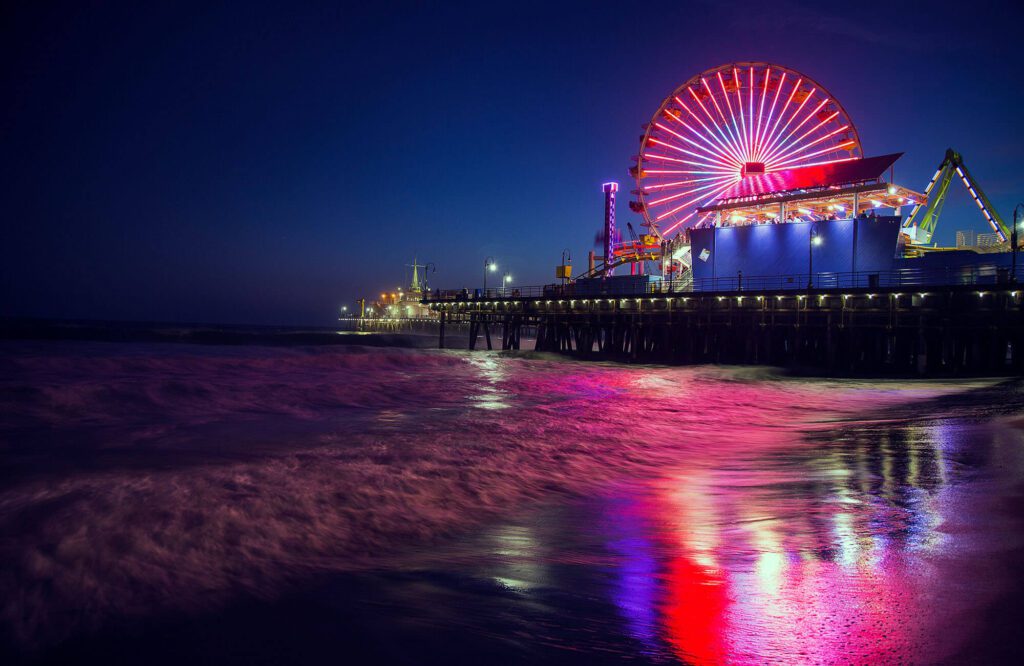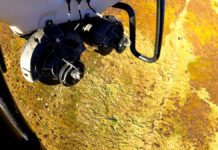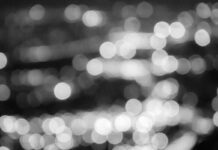
A new method for examining the effects of Artificial Light at Night (ALAN) seemingly reveals severe and lasting damage to small coastal creatures.
An international group of scientists – including two from Plymouth Marine Laboratory (PML) and the University of Plymouth – have developed the approach, which was used to examine the effects of ALAN on two sandy beach crustacean species.
The study focused on sandhoppers (Orchestoidea tuberculate) and beach pillbugs (Tylos spinulosus), using tiny slices of their tissue and powerful microscope techniques to measure these species’ visual systems and assess damage caused by artificial lighting.

In isopods, such as the beach pillbug, which are naturally adapted to dimmer night lighting compared to amphipods like sandhoppers, the light-sensitive part of the eye (rhabdom) is 20 times larger and includes a reflective layer called a tapetum, which helps species in low-light environments.
A short exposure to artificial light caused between three and six times more damage to the beach pillbug’s rhabdom compared to the sandhopper’s, with no recovery after as much as 24 hours.
The isopod’s rhabdom showed structural damage, while the amphipod’s rhabdom was unaffected, suggesting that species adapted to darker environments are more severely and permanently affected by artificial light, potentially creating new challenges for their survival and evolution.
The study is published in the journal Science of the Total Environment, and was led by researchers from the Universidad Andrés Bello in Chile.
The researchers say its novel methodology has provided unprecedented insights into the microscopic world of marine crustacean photoreceptors, suggesting that ALAN can result in the disruption of natural behavioural patterns and potential genetic modifications in light-sensitive species.
PML Director of Science Professor Steve Widdicombe, a co-author on the paper, said:
“We already know that artificial light is detected at around a quarter of the world’s coasts and will dramatically increase as coastal human populations more than double by the year 2060. This latest study shows the devastating potential effects it can have on tiny creatures found along the shoreline, which are important food sources and habitat engineers, and how urban lighting can fundamentally alter their sensory systems.”
Dr Thomas Davies, Associate Professor of Marine Conservation at the University of Plymouth and another of the paper’s co-authors, added:
“While the extent and ecological impacts of light pollution are increasingly well understood in the marine environment, current research is often restricted to measuring changes in the behaviour of organisms or how they are assembled within a habitat. This study provides evidence of the direct damage caused by light pollution to the visual capabilities of an animal. Not only does it highlight how light pollution causes harm to marine species directly, but it also raises new concerns around the impacts of lighting associated with deep sea exploration and development. These regions of our oceans experience little or no light and so many animal visual systems are likely to be very sensitive to low light conditions and more easily damaged by lights that otherwise wouldn’t be there.”
PML and the University of Plymouth have partnered on a number of pioneering studies into the impacts of marine light pollution in recent years.
Earlier in 2024, Dr Davies and PML’s Professor Tim Smyth launched the Global Ocean Artificial Light at Night Network (GOALANN) at the United Nations Ocean Decade Conference in Barcelona, aiming to unify research groups from around the world to provide a central resource of marine light pollution expertise, projects and tools.
Prof. Tim Smyth, PML’s Head of Science for Marine Biogeochemistry and Observations, who was not involved in the new study but has also been researching ALAN for a number of years, added:
“Working together, PML and the University of Plymouth have already pioneered several studies into ALAN and we see that it has the potential to reshape the ecology of coastal habitats by interfering with natural light cycles and biological processes. We really need to reconsider our approach to nighttime lighting in coastal and marine environments. Every photon of artificial light could be causing unseen ecological damage. As we continue to grow the mass of evidence that shows the negative impacts of ALAN on marine ecosystems and species it is vital that the science is taken into account within urban planning and coastal management.”






